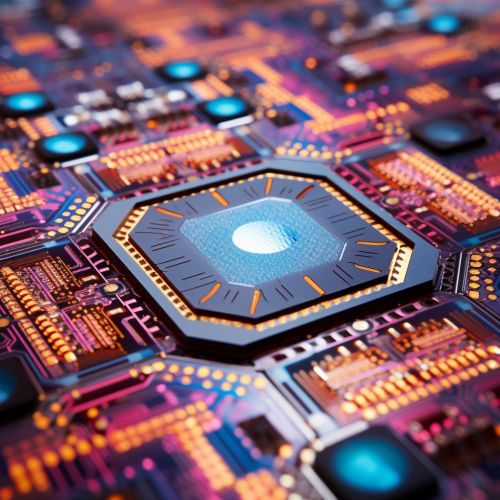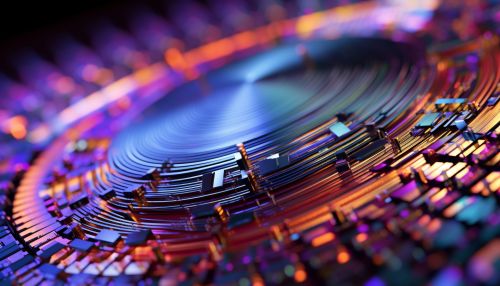Semiconductor
Introduction
A semiconductor is a material that has an electrical conductivity value falling between that of a conductor, such as metallic copper, and an insulator, such as glass. Its resistance decreases as its temperature increases, which is behaviour opposite to that of a metal. Its conducting properties may be altered in useful ways by the deliberate, controlled introduction of impurities ("doping") into the crystal structure, which lowers its resistance but also permits the creation of semiconductor junctions between differently-doped regions of the extrinsic semiconductor crystal. The behavior of charge carriers which include electrons, ions and electron holes at these junctions is the basis of diodes, transistors and all modern electronics.


History
Semiconductor technology is the basis of today's digital electronics. The history of the semiconductor dates back to the early 19th century. The first practical application of semiconductors in electronics was the 1904 development of the Cat's-whisker detector, a primitive semiconductor diode used in early radio receivers.
Types of Semiconductors
Semiconductors can be classified into two types: intrinsic semiconductors and extrinsic semiconductors.
Intrinsic Semiconductors
An intrinsic semiconductor, also called an undoped semiconductor or i-type semiconductor, is a pure semiconductor without any significant dopant species present. The number of charge carriers is therefore determined by the properties of the material itself instead of the amount of impurities. In intrinsic semiconductors, electron-hole charge carrier pairs are promoted to the conduction band by thermal energy, where they flow freely.
Extrinsic Semiconductors
An extrinsic semiconductor is one that has been doped; during manufacture of the semiconductor crystal a trace element or chemical called a doping agent has been incorporated chemically into the crystal, for the purpose of giving it different electrical properties than the pure semiconductor crystal, which is often silicon.
Semiconductor Devices
Semiconductor devices are electronic components that exploit the electronic properties of semiconductor materials, primarily silicon, germanium, and gallium arsenide, as well as organic semiconductors. Semiconductor devices have replaced vacuum tubes in most applications. They use electrical conduction in the solid state rather than the gaseous state or thermionic emission in a vacuum.
Diodes
A diode is a two-terminal electronic component that conducts current primarily in one direction (asymmetric conductance); it has low (ideally zero) resistance in one direction, and high (ideally infinite) resistance in the other.
Transistors
A transistor is a semiconductor device used to amplify or switch electronic signals and electrical power. It is composed of semiconductor material usually with at least three terminals for connection to an external circuit.
Applications of Semiconductors
Semiconductors are used extensively in electronic circuits. As its name implies, a semiconductor is a material that conducts current, but only partly. The conductivity of a semiconductor is somewhere between that of an insulator, which has almost no conductivity, and a conductor, which has almost full conductivity. Most semiconductors are crystals made of certain materials, most commonly silicon.
Digital and Analog Electronics
Semiconductors are the foundation of modern electronics, including radio, computers, and telephones. Semiconductor-based electronic components include transistors, diodes, and integrated circuits.
Solar Cells
Solar cells, also called photovoltaic cells, are devices or banks of devices that use the photovoltaic effect of semiconductors to generate electricity directly from sunlight.
Light Emitting Diodes
Light-emitting diodes (LEDs) are semiconductor light sources that emit light when current flows through them. LEDs are used in a range of applications from lighting to televisions to mobile phones and more.
